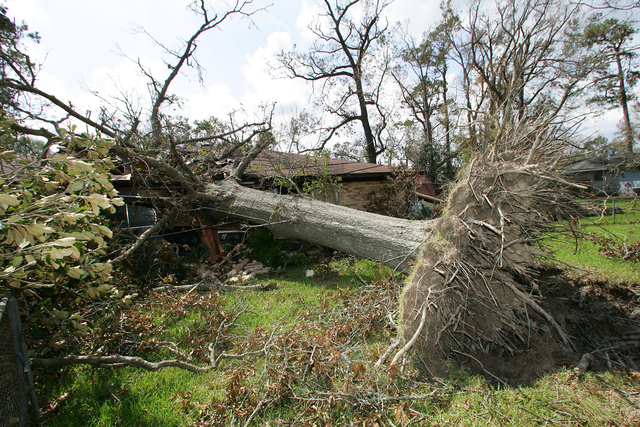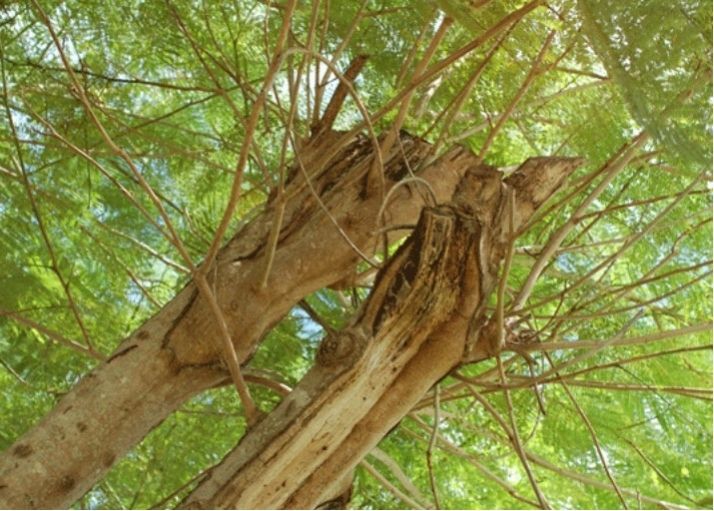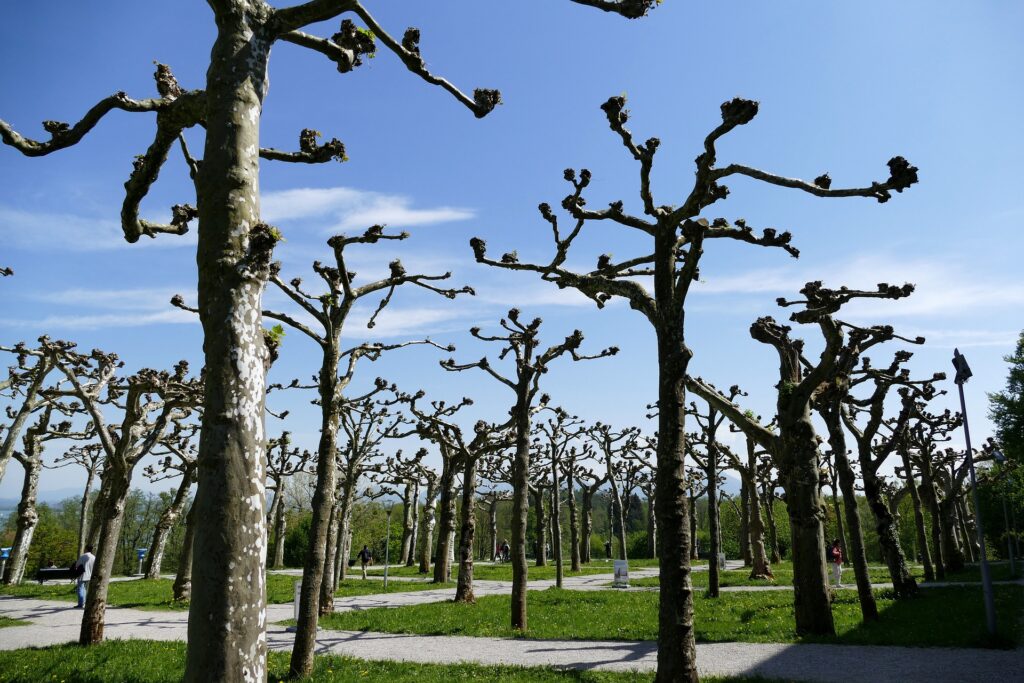Pruning woody plants is a big part of a gardener’s life, and winter is when a lot of it gets done – especially after windy weather leaves some rough edges to tidy up.

When we examine a typical branch, we can see that there are basically three ways one could cut it:
- Trim off the end, either fairly indiscriminately (as when trimming a hedge) or to a specific bud (as when pruning fruit trees, roses, etc): a heading cut.
- Similar to above, snip off the end, carefully cutting back to a sideshoot: a bench or reduction cut (older books may call it ‘selective heading’).
- Cut the whole branch off at the base, removing it completely: a thinning cut.
So, a hedge is a row of trees (typically) that is clipped / trimmed regularly, which means you make indiscriminate heading cuts all over it using shears or a hedge trimmer. This stimulates bushy growth that knits together into a lovely mounded wall of hedge.
If you were to make those same heading cuts all over a normal tree, the result would not be good ornamentally speaking – sometimes it “has to be done” with trees next to roads and buildings for safety, inevitably ruining the form of the canopy, creating messy bottle-brush growth at the ends of the stumps. Something like a bad haircut that won’t ever really grow back.
This is how large tree branches look after a heading cut: not nice on a mature tree, but on a much smaller scale of twigs, it’s exactly what you want all over the surface of your hedge.

Although with certain species, such as the London Plane, even this rough treatment can be made to work: the professionally cut and maintained ends become a sort of “pollard point”.

Anyway: when we are pruning trees and large shrubs for ornamental purposes, most of your pruning work will be thinning cuts or bench cuts.
Which led me to a little lightbulb moment, or at least a coalescing of other people’s ideas into a neat summary.
A beech hedge plant is the same as a beech tree, only pruned differently. That difference could be summed up as:
- Clipping a hedge (i.e. with heading cuts) is the art of keeping trees bushy (tangled!) by pruning / trimming from the outside in.
You are deliberately stimulating the production of more stems. - Pruning a tree (i.e. mostly with thinning & bench cuts) is the art of keeping trees graceful (untangled!) and within bounds by pruning from the inside out.
You are deliberately controlling & avoiding the production of excess stems.
For a solid introduction to pruning garden trees (fruit trees are their own subject), Cass Turnbull’s Beginner Tree Pruning Guide below covers the most important things to know about pruning deciduous and evergreen trees for health and beauty.
I’ve skipped the first minute of the introduction to get to the good stuff:
